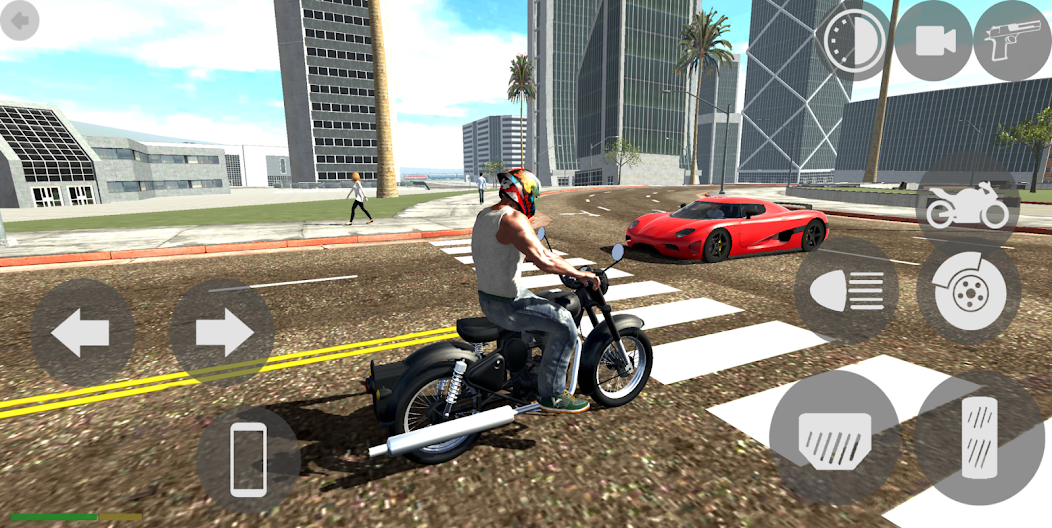Introduction
In the ever-evolving world of technology, smartphones have become an indispensable part of our lives. With the rise of touchscreens, user experience has greatly improved. However, traditional touchscreen interactions still have limitations, often requiring multiple taps or swipes to perform certain actions. Enter gesture apps, revolutionizing the way we interact with our Android devices. In this article, we’ll delve into the world of gesture apps, their benefits, popular options, customization features, and more.
What is a Gesture App?
A gesture app is a software application that allows users to perform various actions on their Android devices by using gestures, such as swipes, taps, or pinches, instead of traditional touch interactions. These apps leverage the built-in sensors of smartphones to recognize and interpret specific movements, enabling users to control their devices in a more intuitive and efficient manner.
Benefits of Gesture Apps
Gesture apps offer a multitude of benefits that enhance the overall user experience. Some of these advantages include:
- Efficiency and Speed: By eliminating the need for multiple taps and navigating through menus, gesture apps enable users to perform actions quickly and efficiently. Tasks like launching apps, switching between screens, or adjusting settings become seamless with a simple swipe or tap.
- Customization and Personalization: Gesture apps often provide extensive customization options, allowing users to tailor the gestures to their preferences. Users can define their own gestures for specific actions, making their interaction with the device more personalized and convenient.
- Accessibility: Gesture apps have proven to be beneficial for users with mobility impairments or disabilities. By offering alternative input methods, such as swipe gestures or gesture shortcuts, these apps make Android devices more accessible and inclusive.
- Productivity Boost: With gesture apps, multitasking becomes a breeze. Users can effortlessly switch between apps, access frequently used functions, or perform complex actions with a single gesture. This improved efficiency enhances productivity and saves valuable time.
- Gaming Enhancement: Gesture apps can elevate gaming experiences by providing additional control options. Users can assign gestures for in-game actions or use gestures to navigate menus, offering a more immersive and enjoyable gaming session.
Popular Gesture Apps for Android
- AppX: This gesture app boasts a wide range of customization options, allowing users to define their own gestures for various actions. It supports both system-level and app-specific gestures, making it a versatile choice.
- GestureMaster: With an intuitive interface, GestureMaster offers an array of pre-defined gestures and actions, ensuring a smooth user experience. It also supports integration with popular apps, enabling seamless navigation.
- SwiftGestures: This lightweight gesture app focuses on simplicity and ease of use. It offers a collection of gestures optimized for speed and efficiency, making it ideal for users looking for a straightforward gesture-based experience.
- GestureSense: Known for its advanced gesture recognition capabilities, GestureSense provides an extensive gesture library and precise tracking. It offers a wide range of gestures for system functions, app shortcuts, and more.
How to Use a Gesture App
Using a gesture app is simple and straightforward. Follow these general steps to get started:
- Install: Download and install the preferred gesture app from the Google Play Store.
- Enable Accessibility: Grant the necessary accessibility permissions to the gesture app to allow it to function properly.
- Configure Gestures: Open the gesture app and explore the customization options. Define gestures for desired actions, such as launching apps, controlling media playback, or adjusting device settings.
- Practice and Refine: Familiarize yourself with the assigned gestures and practice using them. Refine the gestures if needed to ensure smooth and accurate recognition.
- Enjoy Gesture-based Interaction: Once configured, start using the gestures to navigate your device more efficiently and enjoy the enhanced user experience.
Customization Options
Gesture apps typically provide a wide range of customization options to suit individual preferences. These options may include:
- Defining custom gestures for specific actions
- Adjusting gesture sensitivity and recognition speed
- Setting up gesture shortcuts for quick access to apps or functions
- Choosing between various gesture libraries and themes
- Configuring gesture areas or zones on the screen for specific actions
Increasing Productivity with Gesture Apps
Gesture apps can significantly boost productivity by simplifying common tasks. Here are a few examples:
- Swipe left or right to switch between open apps swiftly.
- Perform a “pinch” gesture to zoom in or out of images or web pages.
- Assign a gesture to quickly toggle Wi-Fi, Bluetooth, or other settings.
- Use gestures for copying, pasting, or undoing actions, enhancing text editing efficiency.
Gesture Apps for Accessibility
Gesture apps play a crucial role in enhancing the accessibility of Android devices. They provide alternative input methods for users with mobility impairments, making it easier to interact with smartphones and tablets. By assigning gestures to common functions, individuals with disabilities can navigate their devices independently, fostering inclusivity and empowerment.
Gesture Apps for Gaming
Gamers can take their experience to the next level with gesture apps. These apps offer gesture-based controls and shortcuts, providing gamers with additional options for gameplay. Assigning gestures to in-game actions or using gestures for menu navigation allows for more intuitive and immersive gaming sessions.
Gesture App Security
Security is a significant concern when using gesture apps. To protect your data and privacy, consider the following:
- Choose reputable gesture apps from trusted developers.
- Regularly update the gesture app to ensure any security vulnerabilities are patched.
- Be cautious when granting accessibility permissions to apps and review the requested permissions carefully.
- Avoid using sensitive information, such as passwords or credit card details, within gesture app actions.
Gesture App Battery Consumption
While gesture apps consume a certain amount of battery power, the impact is generally minimal. However, to optimize battery usage, follow these tips:
- Adjust the gesture app’s settings to optimize battery consumption.
- Avoid assigning resource-intensive gestures or excessive gestures.
- Keep the gesture app updated to benefit from battery optimization enhancements.
Gesture App Recommendations
Choosing the right gesture app depends on personal preferences and requirements. Some highly recommended gesture apps for Android include AppX, GestureMaster, SwiftGestures, and GestureSense. Explore these apps and select the one that aligns with your needs, providing a seamless and efficient gesture-based interaction.
Conclusion
Gesture apps are transforming the way we interact with our Android devices, offering intuitive and efficient controls beyond traditional touchscreen interactions. By enabling users to perform actions with simple gestures, these apps enhance productivity, accessibility, and personalization. Whether you’re a multitasking enthusiast, a gamer, or someone looking for a unique user experience, gesture apps provide a game-changing solution. Embrace the power of gestures and unlock a new level of convenience and efficiency on your Android device.
FAQs
1. Can I use gesture apps on any Android device? Yes, gesture apps are compatible with most Android devices. However, it’s recommended to check the app’s compatibility with your specific device before installing.
2. Are gesture apps difficult to set up? Gesture apps are designed to be user-friendly and intuitive. Setting up gestures typically involves a few simple steps, and most apps provide guided tutorials to assist users.
3. Can I use multiple gesture apps simultaneously? While it’s technically possible to use multiple gesture apps, it can lead to conflicts and interfere with the proper functioning of gestures. It’s generally recommended to stick to one gesture app at a time.
4. Do gesture apps consume a lot of system resources? Gesture apps are designed to be lightweight and optimized for performance. While they may consume some system resources, the impact on overall device performance and battery life is usually minimal.
5. Are gesture apps secure? As with any app, it’s crucial to download gesture apps from reputable sources. Stick to trusted developers and review the app’s permissions before granting access. Keeping the app updated ensures any security vulnerabilities are addressed promptly.




